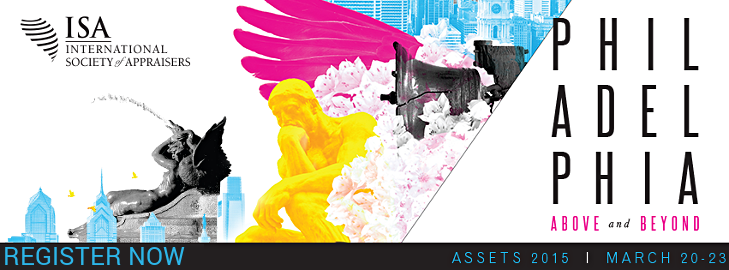Fellow appraiser and art conservator Peter Kostoulakos sent me an interesting article from Wealth Management about some of the issues of investing in art beyond market risk. This short article looks at some of the concerns from a criminal perspective. The article notes the FBI has an object's list of 8,000 works they are looking for and that 12,000 works have been recovered since 2005.
The article gives some pointers on what red flags to look for from the object as well as from the seller. It is very relevant, with one of the bullet points being issues with "specific artists, such as Picasso, Dali, Chagall, and Miro." I know this concern first hand as a recent client purchased some art on a cruise ship, and all of those artists were represented within his new "collection". With a little work and effort, we were able to return the prints, but it still cost around $10,000 in restocking fees.
Wealth Management reports
Source: Wealth ManagementWhen advisors and wealth managers think about the risks of investing in the art market, they often think in terms of market risk: Is this something my client can sell down the road for more than they purchased it for? But in the art market, there’s also object risk—the risk that the piece could be stolen or not authentic, and counterparty risk—whether the person is legally able to purchase or sell the work of art.
“As the art market grows and you’re making more money, so too does the interest of the criminal element,” said Laura Patten, senior intelligence analyst in the Federal Bureau of Investigation’s art crimes division.
Speaking at Deloitte’s Annual Art and Finance Conference at the Armory Show in New York, Patten gave attendees a look into the criminal world behind art and what to look out for to protect the investment.
There are currently 8,000 objects listed as missing in the national stolen art file. But the FBI, the only federal law enforcement entity that focuses exclusively on theft and fraud in the art space, has recovered 12,000 cultural objects since 2005, including a painting by French artist Henri Matisse, which was returned to Venezuela in July 2014.
In the U.S., art thefts typically occur in a person’s home, whereas in Europe, thefts are more organized and typically involve museums, Patten said. There’s a 7 percent recovery rate, she added, so make sure your clients have good insurance, adequate inventory of their works, and strong security measures in place. And please report a theft: “If we don’t know about it, we can’t find it.” She also recommends reporting it to Interpol.
Advisors and their clients may think they’re not vulnerable to theft or fraud. But smart people get taken all the time, Patten said. The only difference between a con artist at the high end and one on the low end is the con artist in the mass market benefits from speed and volume. Those at the high end are in it for the long run, and they will do what it takes to establish a report with his or her victims.
Due diligence is key to protecting clients against fraud and theft in this market.
“I suggest that participants in the art market should apply the same due diligence to their transactions as you would if you were doing a transaction in the financial markets,” Patten said.
The difference here is you need to look at the objects and supporting documentation and the actors themselves. Here are some red flags to look for:
Red flags to look for with objects:
Red flags to look for with actors:
- If it involves a deceased artist or deceased owners;
- If it involves recently discovered works by well-known artists;
- If it’s a print versus a painting, give it more than a once over;
- If it’s abstract expressionism as a school;
- Specific artists, such as Picasso, Dali, Chagall, and Miro;
- If object is accompanied by a low-quality certificate of authentication or other dubious paperwork;
- Any authentication that is based on a thumbprint;
- Any hint your object could be from a conflict zone.
- Whether they have a criminal background. You can find this out on the Federal Bureau of Prisons website.
- If they are involved in a lot of civil cases;
- If they exaggerate their backstory about seemingly unrelated issues. “The high end con is going to go through a great deal of effort to look like you and act like you.”


No comments:
Post a Comment